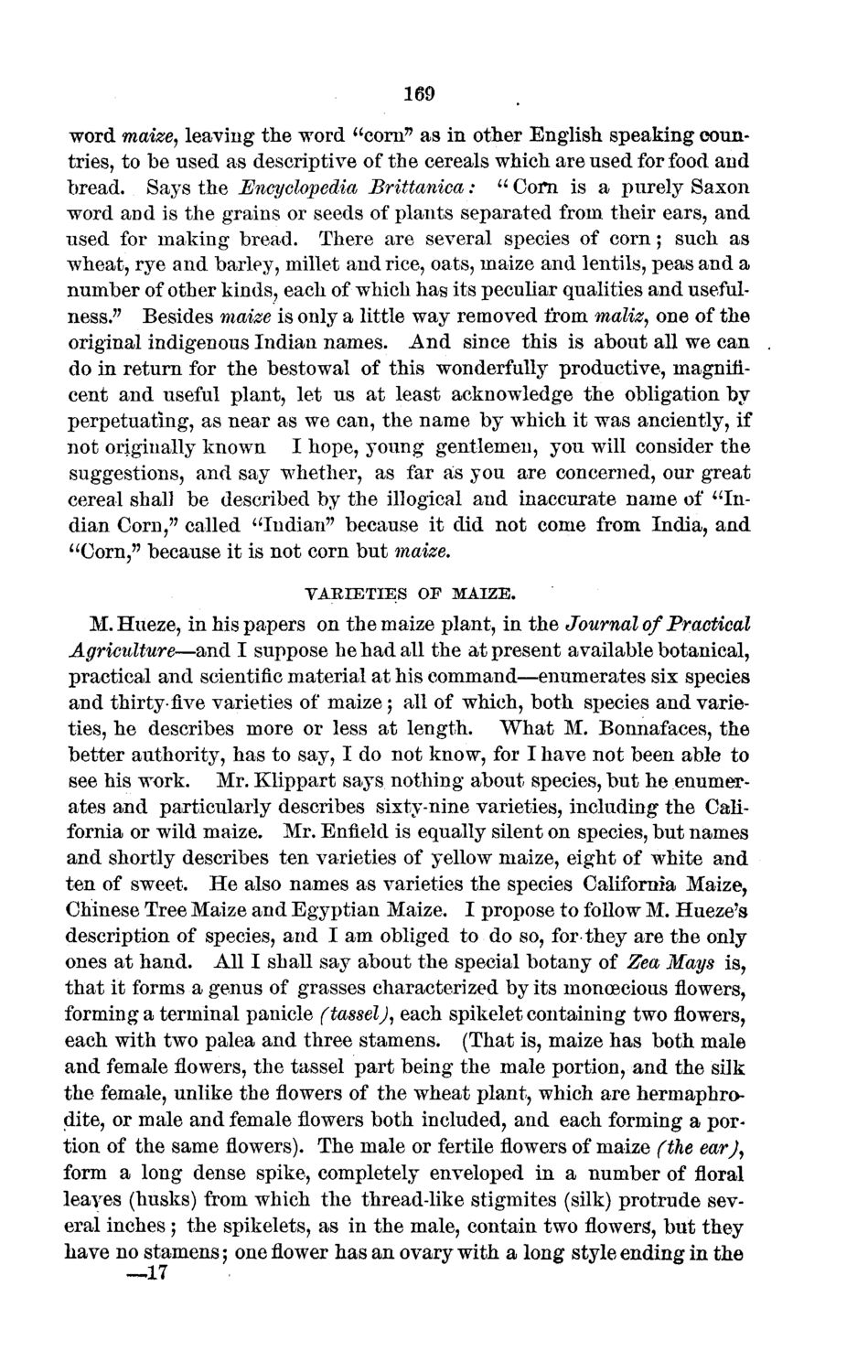| |
| |
Caption: Board of Trustees Minutes - 1872
This is a reduced-resolution page image for fast online browsing.

EXTRACTED TEXT FROM PAGE:
169 word maize, leaving the word "corn77 as in other English speaking countries, to be used as descriptive of the cereals which are used for food and bread. Says the Encyclopedia Brittanica: " Corn is a purely Saxon word and is the grains or seeds of plants separated from their ears, and used for making bread. There are several species of corn 5 such as wheat, rye and barley, millet and rice, oats, maize and lentils, peas and a number of other kinds, each of which has its peculiar qualities and usefulness.77 Besides maize is only a little way removed from maliz, one of the original indigenous Indian names. And since this is about all we can do in return for the bestowal of this wonderfully productive, magnificent and useful plant, let us at least acknowledge the obligation by perpetuating, as near as we can, the name by which it was anciently, if not originally known I hope, young gentlemen, you will consider the suggestions, and say whether, as far as you are concerned, our great cereal shall be described by the illogical and inaccurate name of "Indian Corn,77 called "Indian77 because it did not come from India, and "Corn,77 because it is not corn but maize. VARIETIES OF MAIZE. M.Hueze, in his papers on the maize plant, in the Journal of Practical Agriculture—and I suppose he had all the at present available botanical, practical and scientific material at his command—enumerates six species and thirty-five varieties of maize; all of which, both species and varieties, he describes more or less at length. What M. Bonnafaces, the better authority, has to say, I do not know, for I have not been able to see his work. Mr. Klippart says nothing about species, but he enumerates and particularly describes sixty-nine varieties, including the California or wild maize. Mr. Enfield is equally silent on species, but names and shortly describes ten varieties of yellow maize, eight of white and ten of sweet. He also names as varieties the species California Maize, Chinese Tree Maize and Egyptian Maize. I propose to follow M. Hueze7s description of species, and I am obliged to do so, for they are the only ones at hand. All I shall say about the special botany of Zea Mays is, that it forms a genus of grasses characterized by its monoecious flowers, forming a terminal panicle (tassel), each spikelet containing two flowers, each with two palea and three stamens. (That is, maize has both male and female flowers, the tassel part being the male portion, and the silk the female, unlike the flowers of the wheat plant, which are hermaphrojdite, or male and female flowers both included, and each forming a portion of the same flowers). The male or fertile flowers of maize (the ear), form a long dense spike, completely enveloped in a number of floral leaves (husks) from which the thread-like stigmites (silk) protrude several inches; the spikelets, as in the male, contain two flowers, but they have no stamens; one flower has an ovary with a long style ending in the
| |